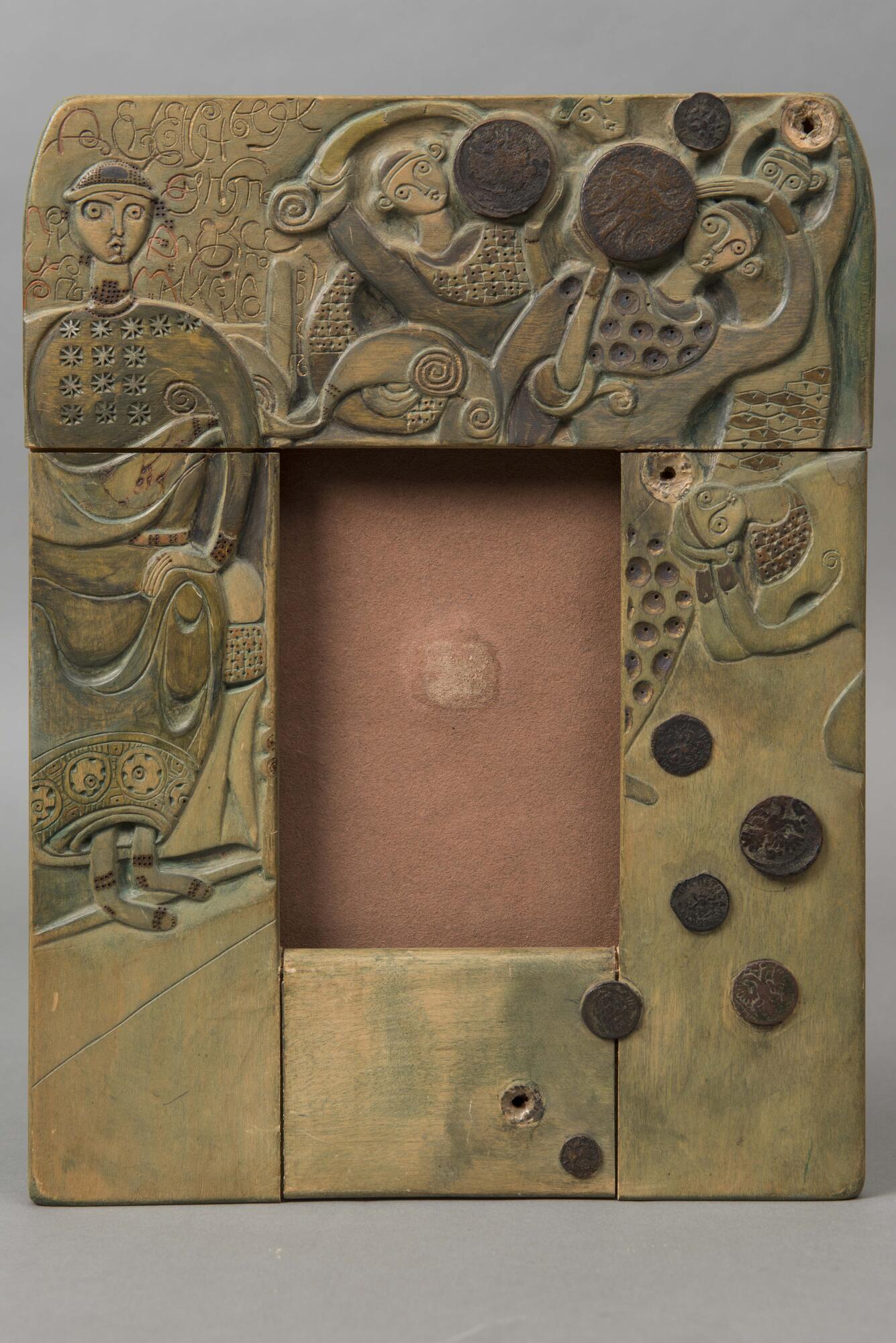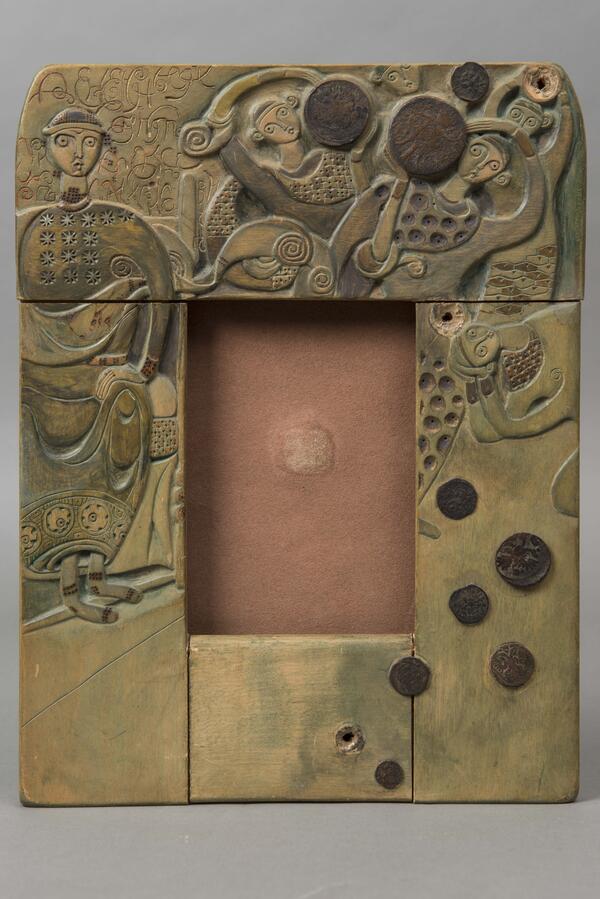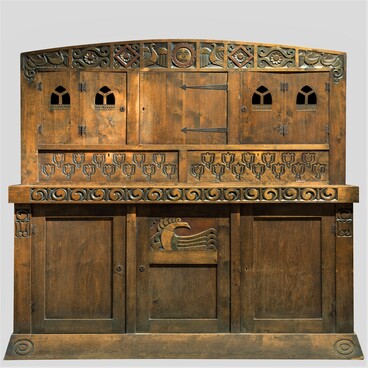The collection of the museum contains a series of photo frames and calendar tablets (about 30 items in total), created by Alexei Zinoviev in 1906, after the Talashkino art workshops were closed. In the same period, the artist, who continued to work in his own workshop in the village of Grinevo near Talashkino, began to collaborate with the Moscow Crafts Museum, for which these samples were probably made.
On the back of the largest and most intricately decorated items, adorned with multi-figure carved and pictorial compositions, ancient coins and fabrics, river pearls and stones, the author’s inscriptions are pokered. Few models have survived in several copies. The options differ from each other by tint, paintings, selection of river stones, different in color. Since these items were intended for circulation and sale, some of them preserved the old paper price tags.
One of the characteristic innovations of Alexei Zinoviev when decorating carvings was the expansion of the theme of the depicted plots. Since 1905, the artist began to decorate furniture and small household items with multi-figure compositions on historical themes. To enhance the effect, the master used various decoratuve materials — old coins, multi-colored sea stones, beads, pearls and nails with chased heads, chased and engraved copper and enamel paintings on copper.
One of the frames depicts the historical plot " Copper Riot under Tsar Alexis I of Russia’. The event that went down in history under the name “Copper Riot” took place in Moscow during the Russian-Polish war in the middle of the 17th century. Excessive issuance of unsecured copper money (which means that the denomination of the coin exceeded the content of valuable metal in it) led to their significant depreciation in comparison with silver. The financial situation in the country led to the flourishing of counterfeiting. A year after the so-called Copper Riot, which took place on July 25, 1662, the minting of copper coins was stopped, and the production of silver money resumed.
On the back of the largest and most intricately decorated items, adorned with multi-figure carved and pictorial compositions, ancient coins and fabrics, river pearls and stones, the author’s inscriptions are pokered. Few models have survived in several copies. The options differ from each other by tint, paintings, selection of river stones, different in color. Since these items were intended for circulation and sale, some of them preserved the old paper price tags.
One of the characteristic innovations of Alexei Zinoviev when decorating carvings was the expansion of the theme of the depicted plots. Since 1905, the artist began to decorate furniture and small household items with multi-figure compositions on historical themes. To enhance the effect, the master used various decoratuve materials — old coins, multi-colored sea stones, beads, pearls and nails with chased heads, chased and engraved copper and enamel paintings on copper.
One of the frames depicts the historical plot " Copper Riot under Tsar Alexis I of Russia’. The event that went down in history under the name “Copper Riot” took place in Moscow during the Russian-Polish war in the middle of the 17th century. Excessive issuance of unsecured copper money (which means that the denomination of the coin exceeded the content of valuable metal in it) led to their significant depreciation in comparison with silver. The financial situation in the country led to the flourishing of counterfeiting. A year after the so-called Copper Riot, which took place on July 25, 1662, the minting of copper coins was stopped, and the production of silver money resumed.





